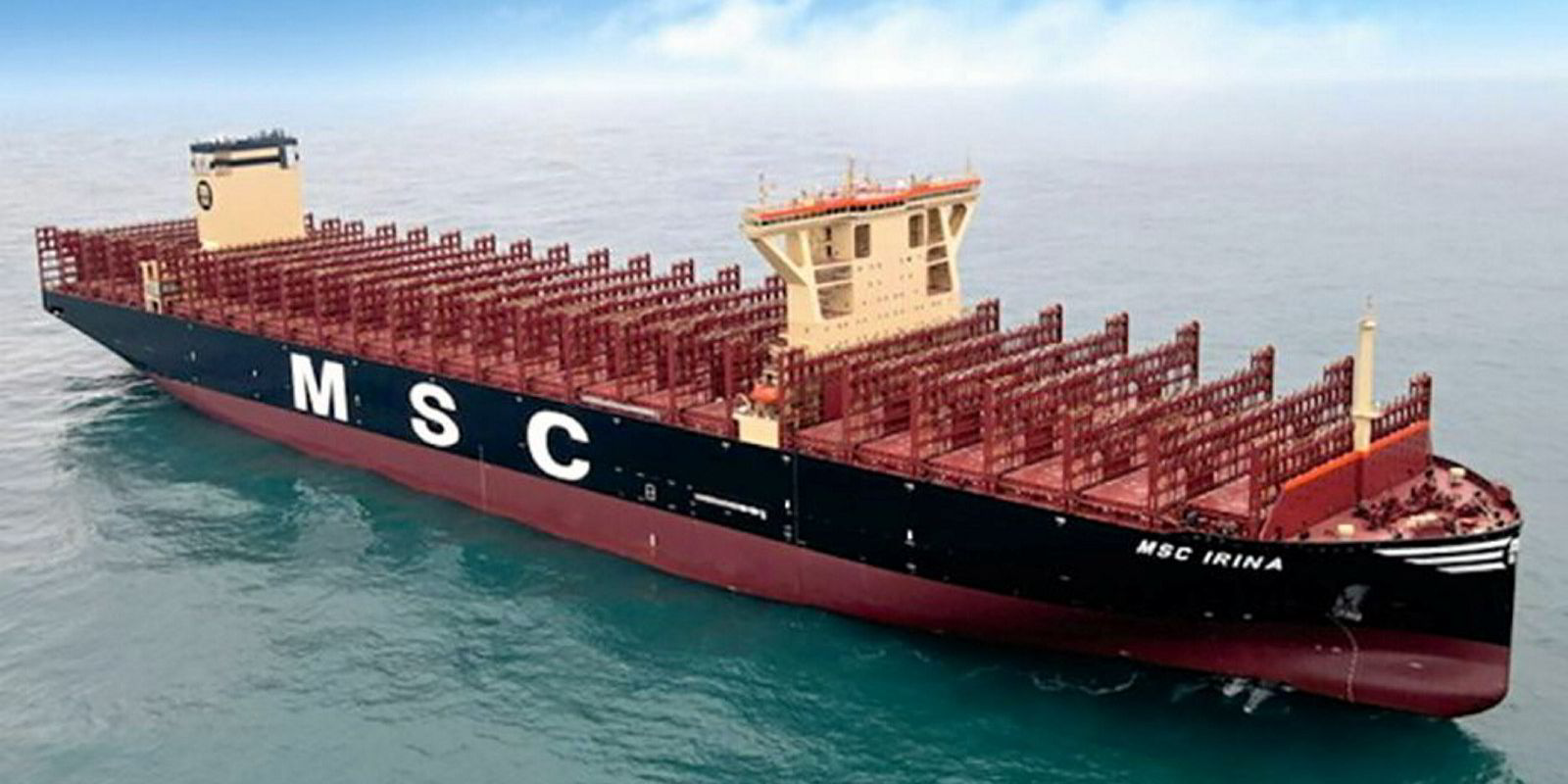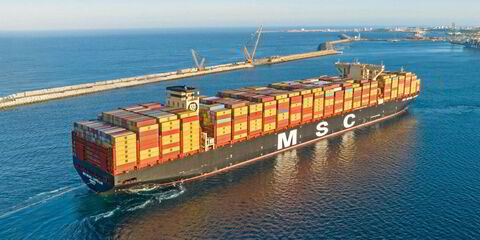Container carriers are shifting vessels onto the trade from Asia to the Mediterranean to benefit from stronger freight rates.
The move is led by MSC Mediterranean Shipping Company, which is deploying larger-than-expected vessels on the key east-west trade.
Rates of around $2,899 per 40-foot equivalent unit (feu) are currently twice the level of those from Asia to northern Europe.
The latter were hovering slightly above $1,349 per feu on 20 March, according to the Freightos Baltic Index.
The two markets have often traded with a narrower spread, but weak demand to northern Europe has pushed rates lower.
Some carriers look ready to chase the market share in the Mediterranean trade.
This month, MSC will deploy larger-than-expected ships on a revived Dragon service from Asia to the western Mediterranean, according to Alphaliner.
The service was suspended in May 2020, when it had previously operated as part of the 2M Alliance.
It was expected to be relaunched this month as a stand-alone service using a vessel of 7,000 teu.
Instead, MSC will operate ships of between 9,000 teu and 14,000 teu, according to Alphaliner.
That will see the carrier deploy twice as much capacity as was expected.
Next week will also see MSC introduce the world’s largest container ship into the trade from Asia to the western Mediterranean.
The 24,346-teu MSC Irina (built 2023) was scheduled to sail from Qingdao on 23 March, with later calls in Gioia Tauro, Barcelona and Valencia.
Still falling
On other trade lanes, freight rates continue to fall in the past week.
The falls have prompted some carriers to suspend services both in the transpacific and Asia to northern Europe trades.
The removal of capacity has not yet been sufficient to stem the fall in rates due to sluggish consumer demand.
Christian Roeloffs, chief executive of container marketplace Container xChange, said: “The demand for freight or containerised trade is limited due to the absence of any significant inventory destocking in the US and European Union.
“The uncertainty around inventory restocking in the first half of 2023 has been exacerbated by the highly uncertain consumer demand side of the picture, with the potential impact of a possible recession on consumer spending in the US and EU region.
“This, in turn, signals a grim outlook for the revival of container prices any time soon.”





